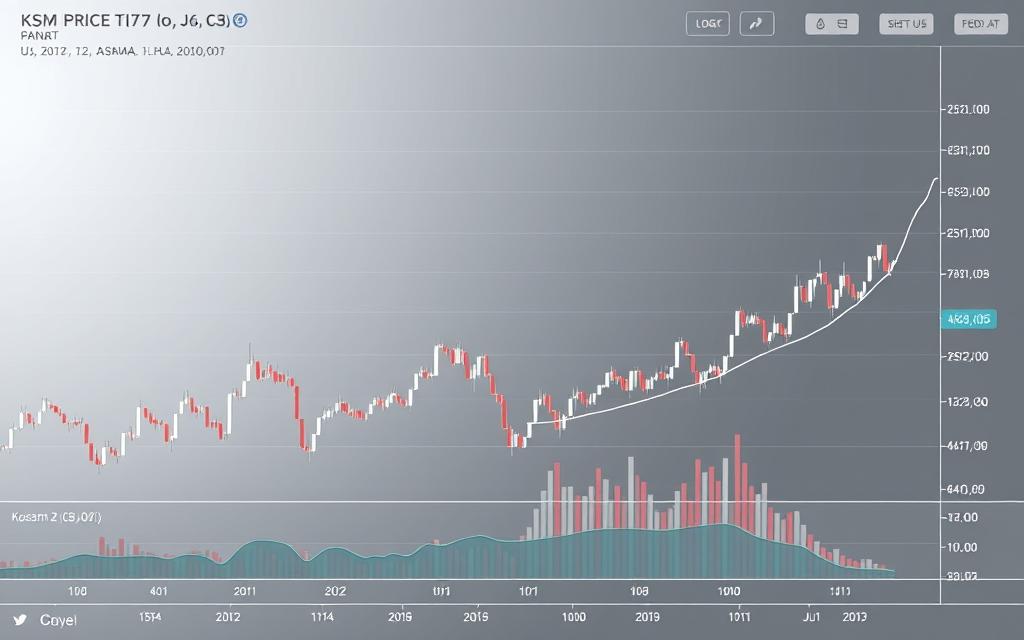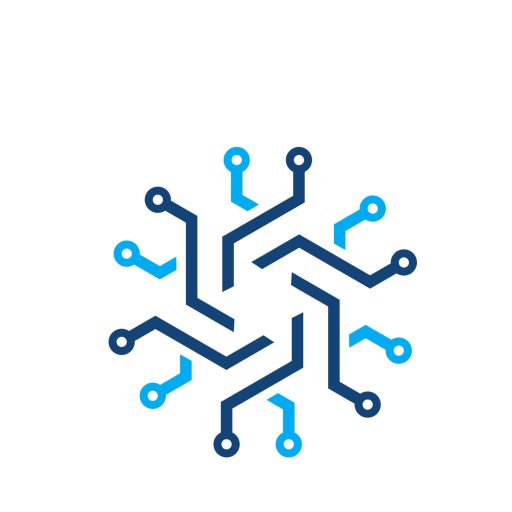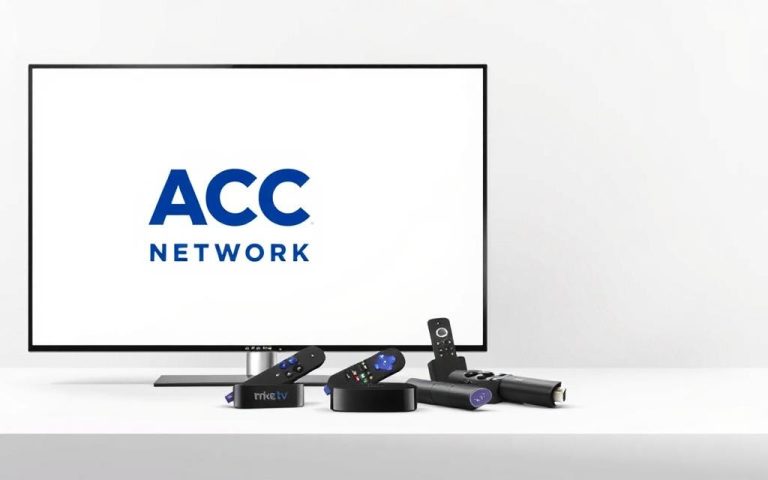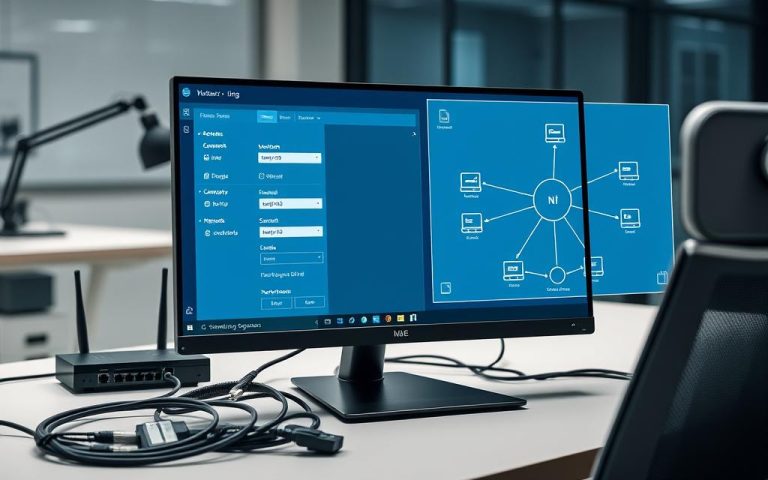Kusama Network Launch: When Was the Kusama Network Launched?
The Kusama Network is a groundbreaking experimental blockchain platform that serves as a “canary network” for Polkadot, allowing for innovative ideas and experiments to be tested before being implemented on the main network.
Launched in August 2019, Kusama has played a crucial role in the development and innovation of the blockchain ecosystem. Understanding the launch of Kusama is essential to appreciating its growth trajectory and technological evolution.
This comprehensive guide will explore the timeline of Kusama’s launch and its subsequent impact on the blockchain development. By examining Kusama’s origins, purpose, and evolution, readers will gain a deeper understanding of this pioneering blockchain platform.
The Birth of Kusama Network
The launch of Kusama Network in August 2019 signaled a new era in blockchain experimentation and development. As a “canary network” for Polkadot, Kusama was designed to provide a testing ground for innovative blockchain features before they were deployed on the Polkadot network.
Official Launch Date and Timeline
Kusama was officially launched in August 2019, with the release of Kusama Chain Candidate1. The timeline of events leading up to the launch involved extensive development and testing to ensure the network’s stability and security. For more insights on Kusama’s development, you can listen to Dieter Fishbein’s discussion on the birth of.
| Event | Date | Description |
|---|---|---|
| Kusama Chain Candidate1 Release | August 2019 | Initial release of Kusama’s candidate chain |
| Kusama Official Launch | August 2019 | Official launch of the Kusama Network |
The Vision Behind Kusama’s Creation
The vision behind Kusama’s creation was to establish an experimental platform for blockchain innovation and development. By providing a testing ground for new features and code releases, Kusama enabled developers to identify and fix issues before deploying them on the Polkadot network. This approach allowed for more robust and reliable blockchain development, ultimately contributing to the growth and maturity of the broader blockchain ecosystem.
When Was the Kusama Network Launched?
In August 2019, the Kusama Network officially came into existence, marking a significant milestone in the blockchain world. This event was the culmination of extensive development efforts by the Web3 Foundation and its team.
The August 2019 Genesis
The Kusama Network’s genesis block was created in August 2019, signifying the official launch of the Kusama Network. This initial deployment involved setting up the network’s foundational infrastructure, including the first blocks on the blockchain. The choice of August 2019 as the launch time was strategic, positioning Kusama in the cryptocurrency landscape as an experimental network for Polkadot.

Key Milestones Following the Launch
Following its launch, the Kusama Network achieved several key milestones. These included the implementation of governance systems, the introduction of parachain auctions, and the ongoing development of its ecosystem. These early developments laid the groundwork for Kusama’s future growth and its role as a canary network for Polkadot, allowing for testing and refinement of features before being deployed on Polkadot.
The progression of these milestones underscored the dynamic nature of the Kusama network, highlighting its capacity for innovation and adaptation within the rapidly evolving blockchain landscape.
The Founders of Kusama
Gavin Wood, Peter Czaban, and Robert Habermeier are the masterminds behind Kusama, leveraging their expertise to create a unique blockchain network. Their combined experience in developing Ethereum and Polkadot network has been instrumental in shaping Kusama’s innovative features.
Gavin Wood: From Ethereum to Kusama
Gavin Wood, co-founder of Ethereum and creator of Solidity, brought his visionary approach to blockchain technology to Kusama. As the first CTO of the Ethereum Foundation, Wood’s background is noteworthy. He played a crucial role in establishing Polkadot and subsequently Kusama.
Peter Czaban and Robert Habermeier
Peter Czaban and Robert Habermeier, alongside Gavin Wood, contributed significantly to the development and launch of Kusama Network. Their expertise in blockchain architecture and development was vital in creating Kusama’s experimental environment.
The Web3 Foundation’s Role
The Web3 Foundation, led by Gavin Wood, managed the token sale for both Polkadot and Kusama, playing a crucial role in incubating and supporting the Kusama project. The foundation’s efforts were instrumental in bringing Kusama to life.
Understanding Kusama: The Canary Network
Kusama Network is often referred to as a canary network, a term that originates from the historical practice of coal miners using canaries to detect toxic gases. In the context of blockchain, this analogy translates to Kusama serving as an early warning system for Polkadot, detecting potential issues and vulnerabilities in the code.
What is a Canary Network?
A canary network is a blockchain or a network that acts as a testing ground or a precursor to another, more stable network. The term is derived from the historical practice where canaries were used by miners as an early warning system for dangerous gases. Similarly, Kusama, as a canary network to Polkadot, provides a platform for testing new features and code before they are deployed on the main Polkadot network.

Relationship Between Kusama and Polkadot
Kusama and Polkadot share the same codebase but differ in their operational parameters. While Polkadot is designed to be a more stable and secure network, Kusama is intended to be more experimental and fast-paced. This relationship allows developers to test and refine their projects on Kusama before deploying them on Polkadot, ensuring a more robust and reliable implementation.
| Network | Purpose | Operational Parameter |
|---|---|---|
| Kusama | Experimental, Testing Ground | Fast-paced, Unaudited |
| Polkadot | Stable, Production Environment | Secure, Audited |
The Purpose and Features of Kusama
The Kusama Network is designed to facilitate rapid experimentation in blockchain development, serving as a crucial testing ground for projects before they are implemented on Polkadot. This experimental environment allows developers to test new blockchain ideas and innovations in a fast and secure manner.
Experimental Environment for Blockchain Development
Kusama offers a unique platform for developers to iterate on their blockchain projects quickly. With its fast transactions, high security, and scalability, Kusama is an ideal environment for developing decentralized applications (dApps) and decentralized finance (DeFi) applications. The network’s governance system is also notably faster than Polkadot’s, with a referendum voting period of seven days and an implementation period of eight days.

Key Features That Set Kusama Apart
Kusama’s key features include its ability to facilitate rapid experimentation, high security measures, and a scalable network architecture. These features make Kusama an attractive platform for developers looking to innovate and test new blockchain concepts before moving to more stable environments like Polkadot. The accelerated governance timeframes further enhance its appeal by allowing for faster development and implementation of projects.
Kusama’s Technical Architecture
At the heart of Kusama lies a sophisticated technical architecture that facilitates interoperability and security. This architecture is composed of several key components that work together to enable a robust and scalable network.
The Relay Chain System
The Kusama Relay Chain is the central component of its technical architecture, utilizing a nominated proof-of-stake (NPoS) consensus mechanism. This allows for efficient transaction processing and provides a secure environment for the network. The Relay Chain serves as the backbone of the Kusama ecosystem, coordinating the various parachains and ensuring the overall integrity of the network.

Parachains and Parathreads
Parachains are individual blockchain networks that operate alongside each other on the Kusama network. Each parachain can have its own consensus algorithm, token economy, and functionality, allowing for a high degree of customization. In contrast, parathreads differ from parachains in their acquisition method, requiring a fixed registration fee rather than being acquired through an auction.
Bridges and Interoperability
Kusama’s architecture enables interoperability between different blockchain networks through its bridge technology. Bridges allow for the exchange of value and data between various blockchains, enhancing the overall functionality of the network. This interoperability is a key feature that sets Kusama apart from other blockchain platforms, providing a flexible environment for developers to build specialized blockchains tailored to specific use cases.
The Kusama Governance System
Kusama’s governance is characterized by a tripartite system that ensures checks and balances within the network. This system is designed to be robust and adaptable, allowing the community to participate actively in decision-making processes.
Structure and Roles
The governance structure of Kusama consists of three main branches: the Referendum chamber, the Council, and the Technical committee. The Referendum chamber includes all KSM holders who can vote on proposals. The Council comprises 13 elected members responsible for proposing and voting on referendums. The Technical committee, elected by the Council, is tasked with proposing and vetting technical upgrades and proposals.
The Referendum Process
The referendum process in Kusama allows for voting on proposals every 8 days. This cycle enables the community to actively participate in decision-making. Proposals are selected based on the number of votes and the bonding of 5% of the proposed amount by the proposer. The Adaptive Quorum Biasing mechanism adjusts voting thresholds based on voter turnout and proposal origin, ensuring that proposals are thoroughly vetted.
The Kusama Treasury
The Kusama Treasury is funded through transaction fees, lost deposits, inefficiencies in staking, and slashing penalties. Any KSM holder can propose a spending proposal by bonding 5% of the proposed amount. The Treasury plays a crucial role in supporting ecosystem development through the proposal and voting system, enabling the community to fund projects and initiatives that benefit the network.

Network Participants and Their Roles
Understanding the roles of network participants is essential to grasping how Kusama operates. The Kusama network is sustained by a variety of actors, each playing a unique role in maintaining its integrity and functionality.
Validators and Nominators
Validators are crucial for maintaining the network by producing new blocks and achieving consensus. They are rewarded under the Proof-of-Stake system for their efforts. Nominators support the network by staking their KSM tokens with trustworthy validators, thereby securing the Relay Chain. This creates an economic incentive system where validators receive nominators’ staked tokens and their votes, promoting network security.
- Validators maintain the network through block production and consensus building.
- Nominators participate in network security by staking their KSM tokens.
Collators and Governance Actors
Collators gather transactions and create parachain blocks that are validated by the network. This process is vital for the smooth operation of the parachains within the Kusama ecosystem. Governance actors, including council members, technical committee members, and voting token holders, shape the network’s evolution through proposals and referendums.
- Collators create parachain blocks containing the latest transactions.
- Governance actors influence the network’s direction through governance mechanisms.

The KSM Token: Kusama’s Native Currency
As the native token of Kusama, KSM is integral to the network’s security, governance, and transaction processes. The KSM token serves various functions within the Kusama ecosystem, making it a crucial component for users and stakeholders.
Distribution and Acquisition
The distribution of KSM tokens was closely tied to Polkadot’s DOT token distribution. Users who participated in Polkadot’s pre-sale were eligible to receive an equivalent amount of KSM tokens. Beyond this initial distribution, KSM tokens can be acquired through various means, including cryptocurrency exchanges, treasury proposals, and the bug bounty program. This diverse range of acquisition methods ensures that KSM tokens are accessible to a broad audience.
Utility and Functions
KSM tokens are multifunctional within the Kusama network. They are used for staking, allowing holders to participate in the validation process by nominating validator nodes. KSM tokens also grant voting rights, enabling holders to participate in governance decisions regarding the network’s development. Furthermore, KSM is used to pay transaction fees on the network, ensuring its smooth operation. The token economics of KSM is designed to incentivize network participation and security through staking rewards, making it an integral part of the network’s functionality.

As emphasized by Gavin Wood, co-founder of Kusama and Polkadot, “KSM is not just a token; it’s a key component that enables the Kusama network to function as a decentralized, secure, and scalable platform.” The utility value of KSM differs significantly from purely speculative cryptocurrencies due to its critical role in network operations.
Kusama’s Parachain Auctions
The launch of parachain auctions on Kusama was a pivotal moment for the ecosystem. It marked the beginning of a new era in blockchain development and interoperability.
The First Parachain Slots
Kusama’s first parachain slot auction opened on June 15th, 2021, and resulted in Karura Network winning the first slot with a total lock-up bid of 500,000 KSM. Subsequent auctions allocated slots to Moonriver and Shiden Network. The first functioning parachain to launch was Statemine, designed for asset deployment.

Impact on the Kusama Ecosystem
The parachain auction mechanism, including crowdloan processes, allowed KSM holders to support projects they believed in. This not only expanded Kusama’s capabilities but also demonstrated the viability of its multi-chain architecture.
| Parachain | Project |
|---|---|
| Karura Network | DeFi platform |
| Moonriver | Smart contract platform |
| Shiden Network | dApp platform |
KSM Price History and Market Performance
The KSM token’s price history is a story of significant volatility and growth. Since its introduction, KSM has experienced considerable fluctuations, influenced by various market and ecosystem-specific factors.
From Launch to All-Time High
The KSM token began trading in December 2019 at $1.71. Initially, the price dipped below $1.20 in early 2020. However, it started gaining momentum, steadily climbing higher throughout 2020. The launch of the Polkadot mainnet in mid-August triggered a significant surge, pushing the price above $14. The upward trend continued into 2021, culminating in an all-time high of $621.71 on May 18, 2021, according to Coinmarketcap data.

Market Position and Trading Volume
KSM’s market performance has been influenced by broader crypto market trends and Kusama-specific developments, such as parachain auctions. The token’s market capitalization ranking and trading volume have fluctuated over time, reflecting its dynamic position within the cryptocurrency landscape. As an investment, KSM has presented opportunities for growth, albeit with associated risks due to its price volatility. As of the latest data, KSM continues to be a significant player in the crypto market, with its price and market performance closely watched by investors and enthusiasts alike.
“The price of KSM has been on a rollercoaster ride, with notable highs and lows, making it a fascinating yet risky investment opportunity.”
Conclusion: Kusama’s Legacy and Future Outlook
Kusama’s evolution as a blockchain development platform has been remarkable. Since its launch in August 2019, it has become a vital experimental network for Polkadot, testing new blockchain ideas before they are implemented on the main network.
Kusama has fulfilled its purpose as a canary network while establishing its own distinct value and community. Its forward-thinking architecture and strong community support position it to remain a market leader for dApp creation and blockchain development. Future developments, including parachain expansion and technical innovations, are expected to drive continued growth.
As an investment opportunity and development platform, Kusama’s long-term outlook is promising. Its experimental nature and rapid development cycle will keep it at the forefront of blockchain innovation for years to come.
FAQ
What is the Kusama canary network, and how does it relate to Polkadot?
The Kusama canary network is a blockchain platform that serves as a testing ground for Polkadot. It allows developers to test and refine their projects before deploying them on Polkadot.
Who is the founder of Kusama, and what is his background?
Gavin Wood, one of the co-founders of Ethereum, is the founder of Kusama. He is also the co-founder of Polkadot and the Web3 Foundation.
What is the role of validators and nominators in the Kusama ecosystem?
Validators are responsible for validating transactions and creating new blocks, while nominators support validators by staking their KSM tokens.
How does the Kusama governance system work?
The Kusama governance system is a decentralized decision-making process that involves referendums, a technical committee, and council members.
What is the purpose of parachain auctions on Kusama?
Parachain auctions allow projects to acquire parachain slots on the Kusama relay chain, enabling them to participate in the ecosystem.
What is the KSM token, and how is it used?
The KSM token is the native cryptocurrency of the Kusama blockchain, used for staking, governance, and other purposes.
How does Kusama achieve interoperability with other blockchains?
Kusama achieves interoperability through its relay chain and parachain architecture, as well as its bridge technology.
What is the significance of the Web3 Foundation in the Kusama ecosystem?
The Web3 Foundation is a non-profit organization that supports the development of Kusama and Polkadot, providing funding and resources to projects within the ecosystem.















